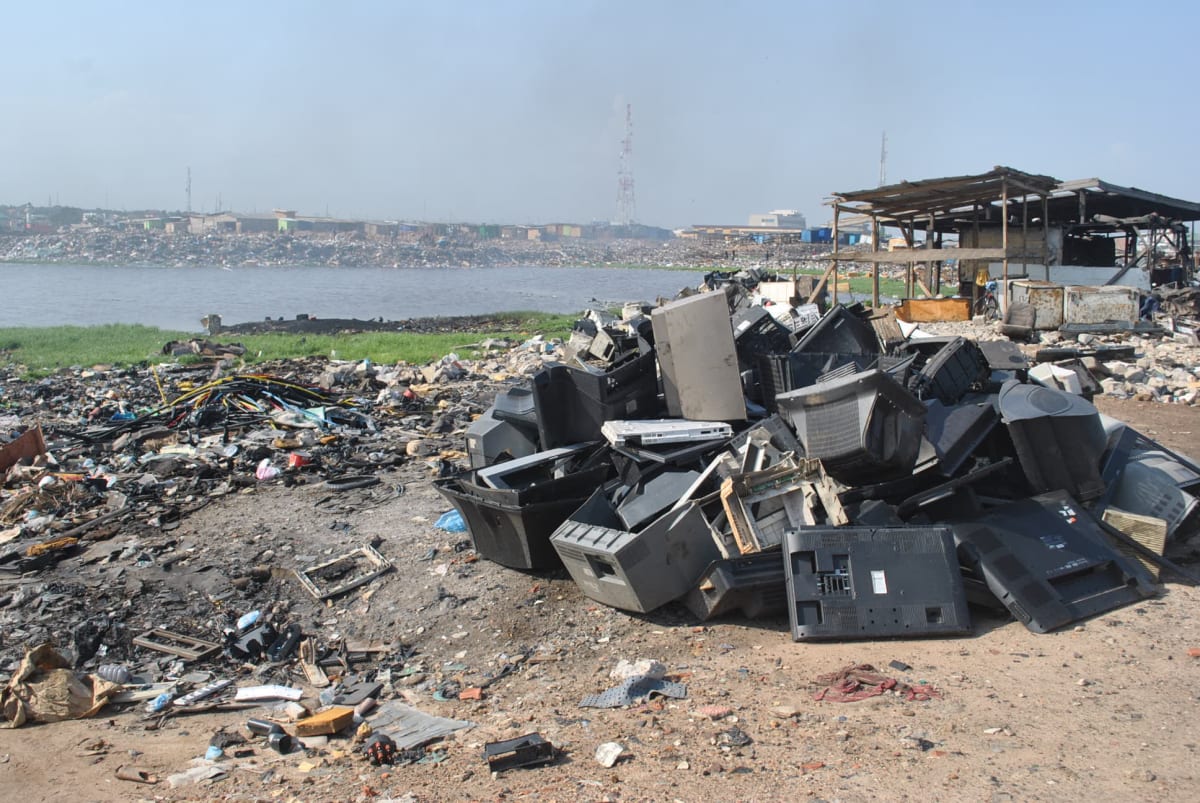Only 7 percent of e-waste comes from cellphones and computers.
Updated June 13, 2015
Products are chosen independently by our editors. Purchases made through our links may earn us a commission.
The term “e-waste” brings to mind electronics like computers, monitors, mobile phones, and TVs. But according to a new report from the United Nations University, about 60 percent of electronic waste comes from home appliances, including everything from washers and dryers to small appliances like electric shavers.
In fact, only 7 percent of last year’s 41.8 metric tons of global e-waste consisted of electronics like phones and computers. The study also notes that the U.S. and China produced 32 percent of the world’s e-waste, and to make matters worse, only one-sixth of last year’s e-waste was recycled.
So where does the rest of this e-waste wind up? West Africa.
The Guardian reports that the largest e-waste dumping site in the world, called Agbogbloshie, is in Accra, Ghana. There, young men and boys rummage through the waste for valuable materials and burn the rest.
The study notes that our e-waste contains literal tons of valuable metals, including iron, copper, gold, silver, aluminum, and palladium, all worth an estimated $52 billion. In other words, the operations at Agbogbloshie are a financial no brainer.
The remains of refrigerators at Agbogbloshie, the largest e-waste dumping site in the world.
The problem, of course, is that e-waste is full of toxins like lead, mercury, and chlorofluorocarbons. The Guardian adds that “most workers die from cancer in their 20s,” an utterly grim statistic.
The best way to help prevent that kind of pollution and human exploitation is to properly recycle your appliances. Virtually every town in the U.S. offers an e-waste recycling program. For small appliances and electronics, it’s often free; for large appliances you’ll likely need to pay for them to be recycled with a permit.
But even some local programs simply shuttle e-waste on to Africa and other foreign dumping grounds. For the best possible results, look for recyclers who either refurbish and reuse electronics, or use mechanical shredders to separate out the usable metals.
The EPA offers a program dedicated to recycling appliances, called RAD (Responsible Appliance Disposal). The administration works with numerous utilities and retailers to offer recycling programs and rebates, and there are RAD-partnered recycling centers scattered across the country.
Responsibly recycling your old fridge or washer is a small inconvenience, but it can go a long way to helping the environment—and your fellow man.
{{brightcove ‘3261563231001’}}
Prices were accurate at the time this article was published but may change over time.
The product experts at Reviewed have all your shopping needs covered. Follow Reviewed on Facebook, Twitter, Instagram, TikTok, or Flipboard for the latest deals, product reviews, and more.
Prices were accurate at the time this article was published but may change over time.
The product experts at Reviewed have all your shopping needs covered. Follow Reviewed on Facebook, Twitter, Instagram, TikTok, or Flipboard for the latest deals, product reviews, and more.
Enter your email:
©2024 Reviewed, a division of Gannett Satellite Information Network LLC. All rights reserved.
Products are chosen independently by our editors. Purchases made through our links may earn us a commission.
Enter your email:
